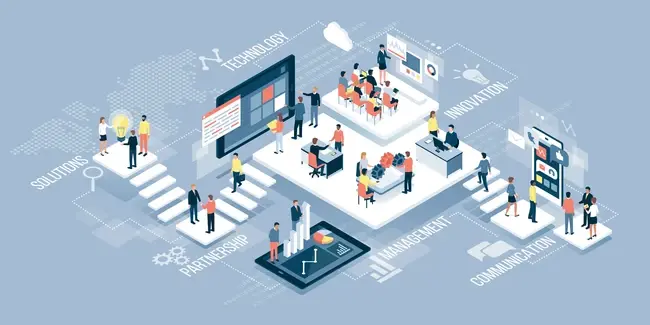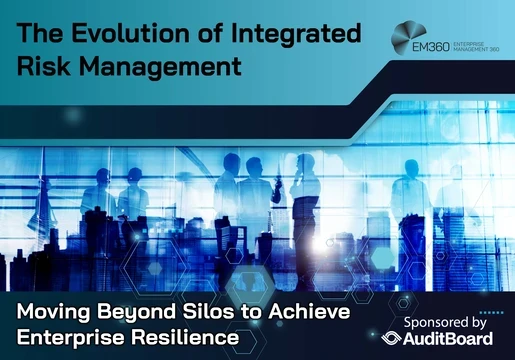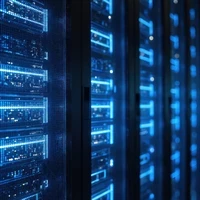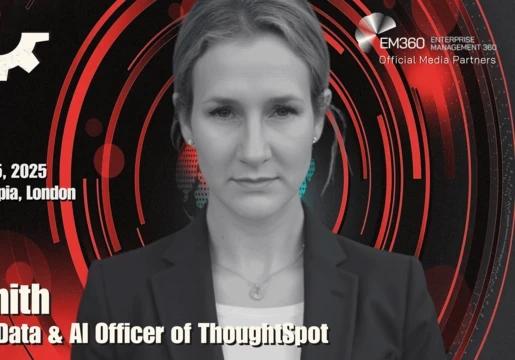
This article was contributed by Ranjan Singh, Executive VP, Product and Technology at Crestron. Singh oversees Crestron’s global product portfolio, responsible for setting the product vision and strategy, and driving product development.
The pandemic has produced a workplace paradigm shift, one so quick there was no time to plan. Yet we should remember that necessity is the mother of invention, so as challenges arise, so too will innovators rise to answer the call. As the hybrid workplace evolves, agile companies are reimagining the tools, technologies, and collaboration solutions needed to advance the people, processes, and philosophies that will impact business outcomes for years to come. As this transition takes place, questions remain, especially for those tasked with managing enterprise-level workplaces. What are the pillars for success post-Covid-19? What are the new products and protocols in the modern workplace that companies need to know? What do leadership, IT teams, and others preparing for the future need to execute?
Foundations of the Post-COVID Workplace
While many companies are allowing employees to continue working remotely, others, including some Silicon Valley giants, are now asking workers to report back to modified offices on at least a part-time basis. Policies vary from organization to organization, but it is clear that safety is paramount, with hybrid approaches — accommodating onsite and dispersed remote teams — a natural consequence. Nearly half of those surveyed (47 percent) for Gartner’s July 2020 report intend to allow employees to work remotely full-time going forward. For some organizations, flex time will be the new norm: 43 percent reported they would grant employees flex days, while 42 percent will provide flex hours.
The return to the workplace has been as gradual as the initial exodus was abrupt. Countless stakeholders are required to ensure a safe, phased transition: interior designers, technology integrators and consultants, AV and IT directors, HR, facilities managers, and security experts. Ultimately, these teams will not only usher workers back to offices but help to reshape corporate environments. For businesses that want to keep workers safe without sacrificing productivity or vital company culture, flexibility, scalability, and accountability through analytics are essential.
It no longer makes sense to build any room that is not considered safe for on-site individuals or inaccessible for remote participants. The flexibility to host both parties is vital because creativity and innovation demand collaborative thinking, brainstorming, and spontaneous solution development — that can only happen when teams are sufficiently connected together, even if it is only in a hybrid style.
It is equally important that this flexibility is scalable. Having one room equipped to host remote workers is not enough, especially for all-hands style meetings. Every room will need to be outfitted with collaborative technology, and each room will need to be able to seamlessly communicate with the others, including remote rooms off-site.
Accountability through analytics is another pillar. Most importantly, sensors, office automation solutions, and room scheduling tools will help ensure employees adhere to safety protocols. In a business sense, however, capturing real-time data about how and where workplace technology is being used is essential. Robust systems can track consequential metrics such as dropped videoconferences, room occupancy, and device usage that allow IT managers to better structure their systems. These analytics will help stakeholders craft better policies, support more workers, and strengthen company culture to ensure continued success.
Technical Innovations to Support Procedural Changes
Studies show people value the office as most important for what is hardest to do from home: face-to-face connection. But the reimagined workplace requires a balance between promoting collaboration and preventing contamination. What tools are necessary to get people working together from wherever they are? In July 2020, Crestron surveyed a group of existing corporate customers who had installed or updated systems in the last two years. Respondents shared that nearly every office space had been or will be modified to include room systems automation, collaboration, and videoconferencing technologies. These tools streamline the implementation and enforcement of novel protocols.
Automated temperature scanners at entrances, facial recognition platforms, and RFID badge scanners will track employees or guests as they enter the building and measure headcount to enforce restrictions. Artificial intelligence (AI) supported by sensors and room scheduling software that can be accessed from mobile, laptops, or in-person, will help measure people flow, and better inform policies to make them more effective. Furniture redistribution and augmentation, controlled circulation footpaths, wireless presentation solutions, digital signage, room occupancy indicators, people counters, sensors to monitor and trigger actions, and intuitive mobile apps will all play a role as well. These products and policies will help create touchless, socially distanced meeting environments wherever possible.
Perhaps above all else, however, videoconferencing will become fundamental to the future of work, with roughly 80% of workplaces adopting or planning to adopt Microsoft Teams, Zoom, or an alternative platform. With fewer people allowed in each meeting room, the most economical way to rapidly transform a room into a dynamic collaboration space is to bring AV technology into it. It can be useful to think of videoconferencing platforms and enablement products as the modern equivalent of the “AV cart” — except now every room will have their own.
What are actionable next steps that decision-makers can take?
Our perspective is that there are four core opportunities or pillars for “incremental innovation” that should be considered in the modern workplace.
The first is delivering an end-user experience and workflow that meets employee expectations. This means implementing incremental upgrades to make the workplace more intuitive, flexible, mobile, productive, and secure. Acting on this objective will require many of the technologies and protocols articulated above, but it also necessitates advanced consideration of employee workflows and room standardization. Leadership and IT teams must provide a consistent experience for employees as well as answers for when that experience is disrupted.
The second incremental innovation involves automation enabled by APIs. Tasks that previously required a non-zero level of physicality will soon be entirely automated and thus, touch-free. Manual tasks like service health checks, adjustments to user licenses and resources, and the rollout and testing of upgrades can be automated, while many room control processes can be offloaded entirely to each room’s respective local device(s) to limit touching of collaborative tools. AI will support this.
Service models that fit within the customers’ existing processes and toolsets are a third factor, supported by scalable and secure cloud services. Whether the location is at home, satellite, or a traditional office, the reach of the cloud extends well beyond the AV/IT department. With few exceptions, the tech team no longer has to be onsite to deploy and commission devices as new cloud solutions enable CIOs and technology managers to remotely deploy, manage, monitor, and measure room device and space usage. This level of cloud cohesion must scale to vendors and service ticket flows as well.
The final incremental innovation will come in the form of commercial models that deliver the best TCO for the customer. With customers increasingly looking for flexibility, “as-a-service” models will grow to better equip businesses with the latest tech, and with the growing convergence of AV and IT there are many choices, requirements, and scales of operations for such models worth keeping in mind. Past models have typically focused on maintenance and in-house support, but this is shifting to outsourced installation, support, and managed services.
Conclusion
The office isn’t dead – it’s simply changing, and in need of even more change to support the workplace of the future. Data overwhelmingly demonstrates that most people prefer traditional office settings, while others wish to work part- or full-time from home. The goal for organizations should be to create a cohesive technological experience, from the office to home, that keeps disparate teams aligned while supporting company culture.














Comments ( 0 )